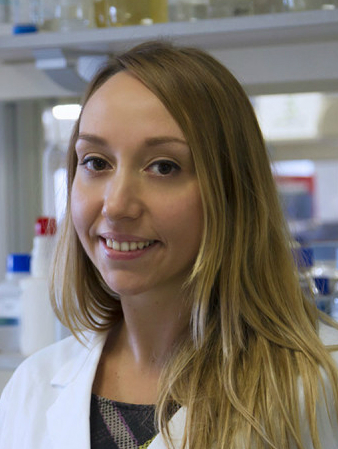HER2-mediated internalization of cytotoxic agents in ERBB2 amplified or mutant lung cancers Journal Article
| Authors: | Li, B. T.; Michelini, F.; Misale, S.; Cocco, E.; Baldino, L.; Cai, Y.; Shifman, S.; Tu, H. Y.; Myers, M. L.; Xu, C.; Mattar, M.; Khodos, I.; Little, M.; Qeriqi, B.; Weitsman, G.; Wilhem, C. J.; Lalani, A. S.; Diala, I.; Freedman, R. A.; Lin, N. U.; Solit, D. B.; Berger, M. F.; Barber, P. R.; Ng, T.; Offin, M.; Isbell, J. M.; Jones, D. R.; Yu, H. A.; Thyparambil, S.; Liao, W. L.; Bhalkikar, A.; Cecchi, F.; Hyman, D. M.; Lewis, J. S.; Buonocore, D. J.; Ho, A. L.; Makker, V.; Reis-Filho, J. S.; Razavi, P.; Arcila, M. E.; Kris, M. G.; Poirier, J. T.; Shen, R.; Tsurutani, J.; Ulaner, G. A.; de Stanchina, E.; Rosen, N.; Rudin, C. M.; Scaltriti, M. |
| Article Title: | HER2-mediated internalization of cytotoxic agents in ERBB2 amplified or mutant lung cancers |
| Abstract: | Amplification of and oncogenic mutations in ERBB2, the gene encoding the HER2 receptor tyrosine kinase, promote receptor hyperactivation and tumor growth. Here we demonstrate that HER2 ubiquitination and internalization, rather than its overexpression, are key mechanisms underlying endocytosis and consequent efficacy of the anti-HER2 antibody-drug conjugates (ADC) ado-trastuzumab emtansine (T-DM1) and trastuzumab deruxtecan (T-DXd) in lung cancer cell lines and patient-derived xenograft models. These data translated into a 51% response rate in a clinical trial of T-DM1 in 49 patients with ERBB2-amplified or -mutant lung cancers. We show that cotreatment with irreversible pan-HER inhibitors enhances receptor ubiquitination and consequent ADC internalization and efficacy. We also demonstrate that ADC switching to T-DXd, which harbors a different cytotoxic payload, achieves durable responses in a patient with lung cancer and corresponding xenograft model developing resistance to T-DM1. Our findings may help guide future clinical trials and expand the field of ADC as cancer therapy. SIGNIFICANCE: T-DM1 is clinically effective in lung cancers with amplification of or mutations in ERBB2. This activity is enhanced by cotreatment with irreversible pan-HER inhibitors, or ADC switching to T-DXd. These results may help address unmet needs of patients with HER2-activated tumors and no approved targeted therapy.See related commentary by Rolfo and Russo, p. 643.This article is highlighted in the In This Issue feature, p. 627. ©2020 American Association for Cancer Research. |
| Journal Title: | Cancer Discovery |
| Volume: | 10 |
| Issue: | 5 |
| ISSN: | 2159-8274 |
| Publisher: | American Association for Cancer Research |
| Date Published: | 2020-05-01 |
| Start Page: | 674 |
| End Page: | 687 |
| Language: | English |
| DOI: | 10.1158/2159-8290.Cd-20-0215 |
| PUBMED: | 32213539 |
| PROVIDER: | scopus |
| PMCID: | PMC7196485 |
| DOI/URL: | |
| Notes: | Clare J. Wilhelm's name is misspelled on the original publication -- Article -- Source: Scopus |
Altmetric
Citation Impact
BMJ Impact Analytics
MSK Authors
-
 270
270Makker -
 147
147Ulaner -
 427
427Rosen -
 786
786Solit -
 207
207Shen -
 293
293Yu -
 354
354Hyman -
 246
246Ho -
 358
358De Stanchina -
 463
463Lewis -
 781
781Berger -
 674
674Arcila -
 874
874Kris -
 642
642Reis-Filho -
 170
170Scaltriti -
 499
499Rudin -
 184
184Razavi -
 425
425Jones -
 82
82Poirier -
 279
279Li -
 36
36Khodos -
 58
58Buonocore -
 57
57Mattar -
 129
129Isbell -
 31
31Cocco -
 177
177Offin -
 17
17Qeriqi -
 17
17Misale -
 16
16Cai -
 10
10Shifman -
 8
8Xu -
 15
15Myers -
 7
7Tu -
 5
5Baldino -
 5
5Little -
 27
27Wilhelm
Related MSK Work




